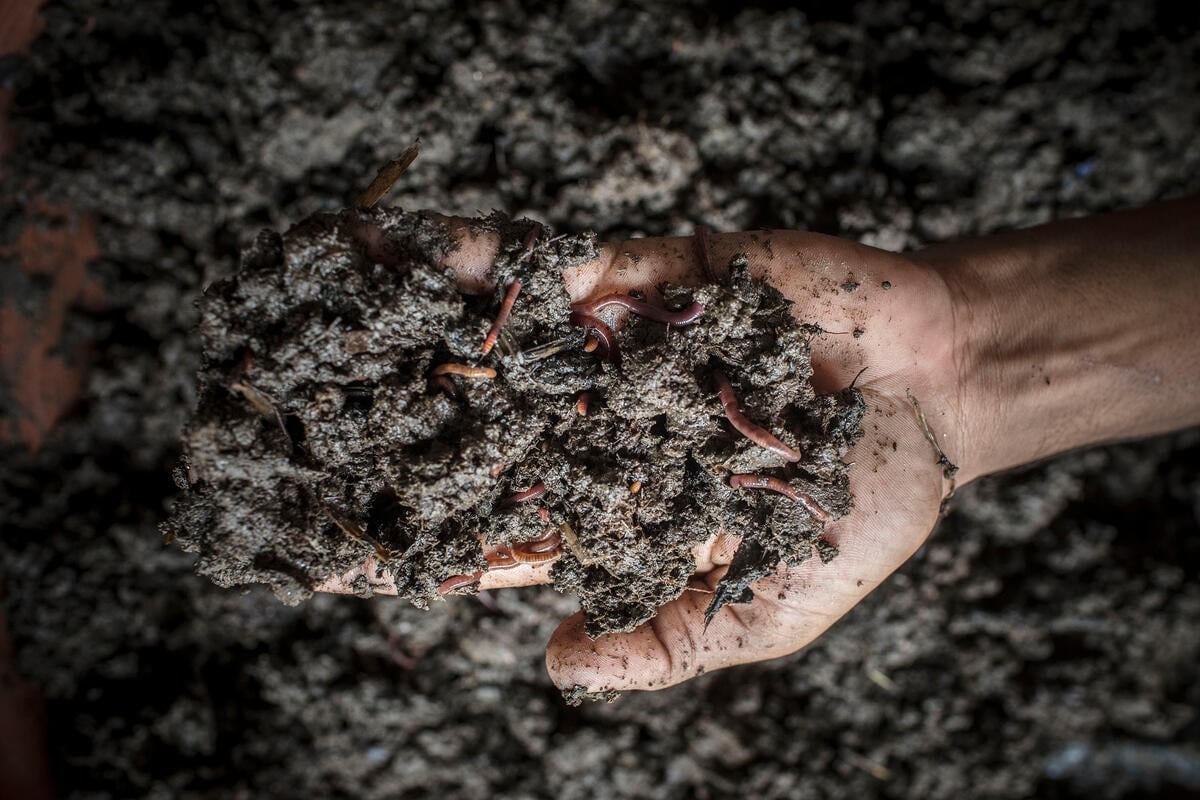December 5, 2025 | 10:22 GMT +7
December 5, 2025 | 10:22 GMT +7
Hotline: 0913.378.918
December 5, 2025 | 10:22 GMT +7
Hotline: 0913.378.918

Worms at a farm in Bangladesh. Photo: Mohammad Rakibul Hasan.
Expanding efforts to measure, monitor, and protect soil biodiversity around the world will intensify further with the establishment of the Global Soil Biodiversity Observatory, to be led by the Food and Agriculture Organization of the United Nations (FAO) and serving as a global reference for scientific collaboration and policy design. The Global Soil Biodiversity Observatory (GLOSOB) was launched by FAO at the COP15, where signatories adopted the Convention of Biological Diversity’s 2020-2030 plan of action.
This plan calls for systematic assessment and monitoring of soil biodiversity to aid implementation of the Kunming Montreal Global Biodiversity Framework (KM-GBF).
While various knowledge-sharing platforms and initiatives have been launched, there is currently a lack of standardized monitoring protocols and actionable strategies for integrating soil biodiversity into policy and national monitoring frameworks, according to Jacob Parnell, the lead author of a new comment in Nature Ecology and Evolution (freely available until 14 August).
This commentary outlines the new Observatory's goals and its top-down coordinating role, which includes working with a suite of bottom-up networks already involved in the project.Considerable work has been done in this emergent field, which has highlighted the extensive efforts needed to fill research gaps, expand global coverage, and, above all, strengthen national monitoring capacities to support the global effort.
Soil biodiversity is clearly linked to agricultural soil fertility, which supports the growth of key food crops, and the biotic communities living in harsh or unproductive farmlands, like hyper-arid, acidic, or waterlogged areas, have an important function as genetic reservoirs. Yet, many of these below-ground biodiversity hotspots fall outside above-ground protected areas or areas under conservation. Major risks to soil biodiversity stem from extreme climate events, land degradation, deforestation, invasive species and pollution.
A core GLOSOB objective is to define improved soil biodiversity indicators – tracking essential biodiversity variables (EBVs) on both taxonomic and functional planes – and build capacity to validate policy agendas aimed at conservation and sustainable management practices, according to Parnell. Currently, there is reasonable data on the distribution of microbial soil carbon and of the soil macrofauna community, both of which highlight soil quality issues, but the evidence base gets thinner beyond earthworms, nematodes, and common bacterial species.
GLOSOB is designed as a tiered system to allow for steady expansion of measurement capacities, extending from soil chemical properties and enzymatic activities to tracking decomposition patterns using leaf litter bags, steadily increasing to more complex nutrient cycling components, and on to intraspecific microbial genetic diversity through shotgun metagenomic sequencing.
Knowing more will require investments in laboratory facilities, training programmes, and standardized monitoring frameworks that enable all countries to collect, analyze, and properly interpret soil biodiversity data. Another key step is integrating biodiversity considerations into conventional soil surveys and national soil information systems.
FAO already leads the Global Soil Partnership, which held its 13th Plenary Assembly last June. It serves as a hub for other initiatives and has catalyzed successful conservation projects such as the Soil Doctors and Recarbonization of Global Agricultural Soils (RECSOIL).
FAO’s leadership in sustainable soil and land management was prominent during this year’s Assembly's grand opening, which also marked the organization's 80th anniversary of founding.
The high-level event brought together global leaders and experts to explore data-driven solutions and technological innovations. A special video tracing FAO’s legacy in this field was unveiled and is available here.
Reflecting on this legacy, FAO Director-General QU Dongyu highlighted the Organization’s commitment to soil health: “From the early days of global soil mapping in the 1960s, to combating desertification across the Sahel, Latin America and Asia, and more recently pioneering next-generation soil mapping with cutting-edge technology, FAO has consistently been a champion of soil health as a foundation of global food security” he said.
(FAO)

(VAN) Landmark SOLAW 2025 report reminds us that resources for food are not infinite.

(VAN) Climate change is a growing concern for agricultural productivity and several studies have focused on how climate variations can impact crop yields.

(VAN) In today's fast-paced society, with people busy with their work and social lives, many dream about quitting the rat race to experience a slower pace of life, which they imagine as being more poetic.

(VAN) Mindanao’s durian industry is reaping the benefits of rising global demand, with farmers now enjoying improved market access, better farmgate prices, and stronger profitability, the Department of Agriculture in Davao Region (DA-11) reported.

(VAN) Iraq is currently grappling with one of the most severe agricultural and livestock crises in its modern history.

(VAN) The Mediterranean and the Black Sea: Fisheries sustainability concerns remain, but overfishing drops to its lowest level in a decade, while aquaculture feeds more people.

(VAN) Cargill Inc has no plans to close its U.S. beef processing plants, days after meatpacker Tyson Foods l opens new tab announced it would shutter a Nebraska facility as industry grapples with cattle supplies.